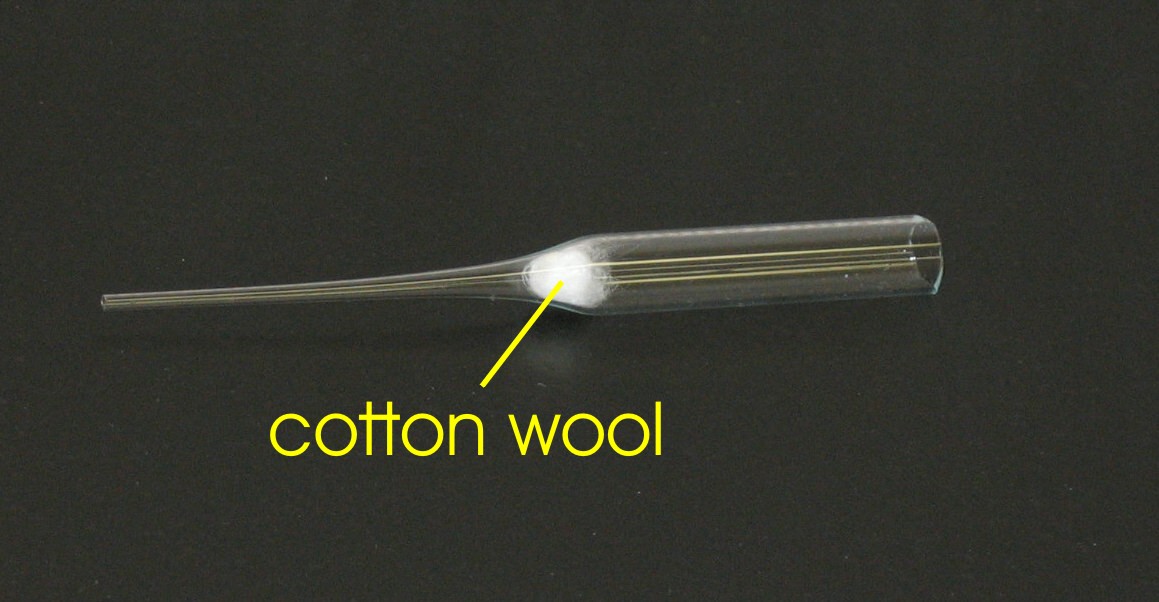
Figure 1:
Pasteur pipette with cotton wool
NMR Sample Preparation [1]
(for a PDF version of this document
click here)
To obtain high resolution NMR spectra it is necessary that your NMR sample is free of suspended material (precipitates, dust, etc.). Suspended material present in solution will increase the line width of the spectrum; broad spectral lines reduce spectral resolution and no amount of shimming can correct for this. Suspended material can easily be removed from an NMR sample by constructing a filter using cotton wool as a filtering agent [2]. Conversely, glass wool is a very poor filtering agent since glass wool does not filter out small particles, whereas cotton wool tends to filter out the smallest of particles. A filter can be made by placing a small amount of cotton wool inside a Pasteur pipette as shown in Figure 1.
|
|
Note that the Pasteur pipette has been cut to facilitate handling of the cotton wool. Alternatively, the cotton wool can also be pushed down an uncut long [3] pipette with the help of a second pipette (this method was used in Figure 2 to position the cotton). The solute of interest can then be dissolved in a separate glass vial using less than the final volume of deuterated solvent (e.g. CDCl3, DMSO-D8, CD3OD, etc.) required to make your NMR sample. After the solute has been dissolved it can be transferred directly to a NMR tube by passing the solution through the cotton filter as shown in Figure 2.
|
|
Finally, the sample volume can be adjusted by adding the remaining solvent to the NMR tube so that a final sample volume of ~700 mL or a sample height of ~55 mm is reached (Figure 3), followed by vigorous shaking of the sample to effectively mix its content. The suggested sample volume for our instruments is 700 mL. Trying to concentrate your sample by reducing the sample volume is not recommended. A short sample (i.e. volume less than 500 mL) can only be shimmed through tremendous effort and this time can be much better spent acquiring your data.
References
[1] Adapted from the Chem 241/341 sample preparation guide by Dr. Jason Cooke, whose students consistently submit some of the best NMR samples seen by the NMR Service Lab.
[2] Medical cotton is reported to be free of compounds that can be extracted by organic solvents (A.E. Derome, Modern NMR Techniques for Chemistry Research, Pergamon Press, 1987).
[3] 9” pipettes are sufficient (no need to buy the much more expensive 10.5” type)